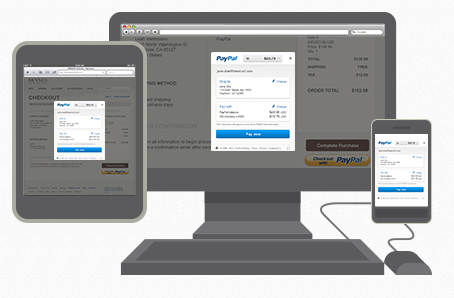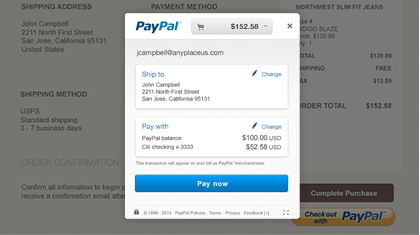 Inbound marketing for ecommerce is all about creating experiences people love - from the first marketing touch to the eventual order completion. A key variable in the user experience on any ecommerce site is the final hurrah - the checkout process that separates a prospect from a customer. PayPal, who has long been a staple of the ecommerce world for accepting payments, is taking another leap forward in making checkout a seamless experience.
Inbound marketing for ecommerce is all about creating experiences people love - from the first marketing touch to the eventual order completion. A key variable in the user experience on any ecommerce site is the final hurrah - the checkout process that separates a prospect from a customer. PayPal, who has long been a staple of the ecommerce world for accepting payments, is taking another leap forward in making checkout a seamless experience.
Consistent User Experience
In the past, to complete a transaction on an ecommerce website, the customer would have to click the "Pay via PayPal" button:

After clicking the button, they'd be taken to a completely separate website (PayPal's) to complete the transaction:

It was always a weird experience to suddenly spirited away from the site you were on to one that looked different and had a different URL. According to a study by the National Cyber Security Alliance, 42% of people they surveyed had abandoned a purchase because they were concerned about their credit card information being intercepted (source). With fake websites becoming such a popular tactic among phishers and other malevolent forces online (launching sites that look legitimate and have legitimate looking URLs such as www.PayPal.ActuallyAHacker.com) consumers have become more and more paranoid about being redirected away from the site they were previously on.
Now, PayPal essentially embeds their purchase experience into the existing website interface that the customer was already on. Significantly less disruptive, this builds greater trust in the prospect.

By keeping the purchase completion experience within the confines of the websites user experience, PayPal minimizes redirect anxiety's impact on cart abandonment.
Brand Trust
The only thing, previously, that had made PayPal such an advantage was that their brand was frequently better known by the consumer than the brand of the site they were buying on. This overcame the issue of the different website. The benefits carry through, with so many consumers being concerned about credit card payment information being intercepted.
Particularly useful for smaller, niche companies using that haven't established a trusting, long-term relationship with a customer, having a known name such as PayPal process the transaction can make prospects feel more comfortable.
The Cloud Inside The Silver Lining
What you sacrifice using PayPal over another merchant processing solution is control over that payment experience. You're limited in the data you can collect (e.g. you can't gather use case or psychographic data to power your pre-transactional marketing for their next purchase. You also can't control additional up-sell/cross-sell activities during the payment process. One of my favorite checkout experiences is at CigarsInternational where they let you play a game of whack-a-mole with additional deals and steep discounts during checkout that plays on the ultimate impulse buy - that might be more complicated if the entire checkout experience is owned by PayPal.
Overall, however, most ecommerce merchants can use PayPal to great effect. At the very least, we can definitely learn from PayPal's example of constantly simplifying the user experience and decreasing transactional resistance for our customers.

